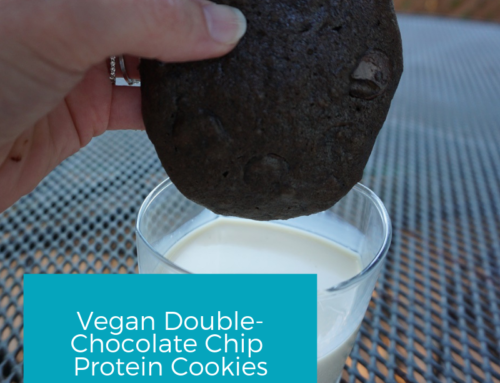One food I struggle to enjoy is anything that tastes or smells similar to vinegar. So, no surprise that it’s 2017 and I just tried kombucha a few months ago. After all, a fermented tea that is naturally alcoholic and was brewed with a “symbiotic colony of bacteria and yeast” doesn’t sound all that appetizing. But part of being open to trying to new foods and not counting calories means not judging a food before giving it a try.
Even though the first use of kombucha (pronounced kom-BOO-cha) comes from China in 221 BC during the Tsin Dynasty, kombucha is one of the hottest trends right now. The drink is popular in the United States but people seem to either love it or hate it.
Financial analysis project kombucha sales will continue to grow 25% each year for the next four years. Kombucha sells for about $3 per bottle and it’s easy to find a recipe online to brew your own drink. So this drink isn’t going anywhere.
WHAT IS KOMBUCHA?
You may hear this drink referred to as mushroom tea but actually not made from mushrooms. Instead, a fermented drink made from tea, sugar, and a SCOBY. SCOBY stands for symbiotic culture of bacteria and yeast and the bacteria and yeast are encased in cellulose. Kombucha is a living, growing organism and is similar to the live cultures that activate yogurt or the cultures that transform cabbage into sauerkraut. Some products also have fruit juices and other flavors added during the production process to modify the taste.

Image source: Steve Frank Films, Making Kombucha
WHAT DOES IT TASTE LIKE?
Kombucha is tart and slightly sweet. Depending on the added flavors, it can taste fruity, floral, or spicy. Some say it tastes similar to sparkling apple cider but with a more pronounced sour taste. After the tea is fermented, it tastes different than brewed tea.
YEAST AND BACTERIA
Yeast and bacteria combine cause fermentation. Yeasts are simple fungi and as they digest sugars, yeast give off CO2, which makes the drink fizzy. When yeasts break down the sugar in kombucha, they leave behind ethanol, B vitamins, CO2 and acids, which is what bacteria need in order to do their job. Bacteria thrive on ethanol and produce acids that are believed to be good for our digestive tract. You can also eat the SCOBY, which has a texture like squid. You don’t want to cook the SCOBY because that would kill the live-probiotics.
KOMBUCHA AND ETHANOL
Since fermentation results in ethanol, there are trace amounts of ethanol in kombucha. The amount is estimated to be about 0.5%. By comparison, beer typically has about 5% ethanol. The alcohol content in raw kombucha can increase after bottling and can reach levels of 2 to 5%. The Tax and Trade Bureau regulates alcoholic beverages and if kombucha is at or above 0.5% by volume at any time during production, when bottled or after bottling, it is considered an alcoholic beverage.
HEALTH BENEFITS OF KOMBUCHA
The health benefits of drinking kombucha have not been fully validated by clinical studies. The health benefits have been reported mostly on historical references and personal testimonies. Some of the reported health benefits include reduce cholesterol, reduce blood pressure, promote liver function, enhance the immune system, relieve bronchitis and asthma, and reduce stress. Kombucha’s popularity and health benefits claims are in part due to the probiotic content of the bacteria it contains. Probiotics are believed to be a healthy bacteria. The benefits might also result from increased tea consumption. But in general, the health claims are greater than the science can currently prove. And also remember, glorifying one food over others isn’t how a healthy relationship with nutrition works.

You will find many different claims about the benefits of this drink. But if you’re like me, you want to research behind them and there is not a lot of that right now. Image source: Dr Axe
TRYING IT FOR THE FIRST TIME
If you haven’t tried this drink, it can seem intimidating with all of the options out there. I know I wasn’t sure which one to try. I recommend going for a flavor that may seem familiar to you. Like strawberry, pineapple, or apple. Also, you are not supposed to shake the bottle. The drink contains carbonation and will fizzle over or explode if you shake it. I think what you’re eating could also impact the tastes of the drink. Kombucha has a very distinct flavor so certain foods may go better with the drink than other foods.
THE VERDICT
If you want to enjoy this fizzy drink, it is recommended to start with small amounts of kombucha, no more than 4 to 8 ounces per day. Even if you have been drinking it for some time, some recommend that maximum intake is no more than 16 ounces per day. Some brands can be high in added sugar. Aim for a drink with 5 grams of sugar or less per serving. Lastly, if you’re considering DIY kombucha, proceed with caution because food safety is an issue since the brew is made with bacteria and yeast.
What’s your verdict? Do you love or hate kombucha? Have you attempted to make this drink at home?
References
Greenwalt CJ, et al. Kombucha, the fermented tea: Microbiology, composition, and claimed health effects. Journal of Food Protection 2000;63:976-981.
Sreeramulu G, et al. Kombucha fermentation and its antimicrobial activity. J Agric Food Chem 2000;48:2589-2594.






interesting and informative!
Thank you for this information. I brew my own kombucha and haven’t had problems since. I didn’t realize it could get up to 5% alcohol or is it 0.5? It makes me nervous when doing it myself to know if it’s high. I do crave the fizziness of it though and hope it’s benefitting my health